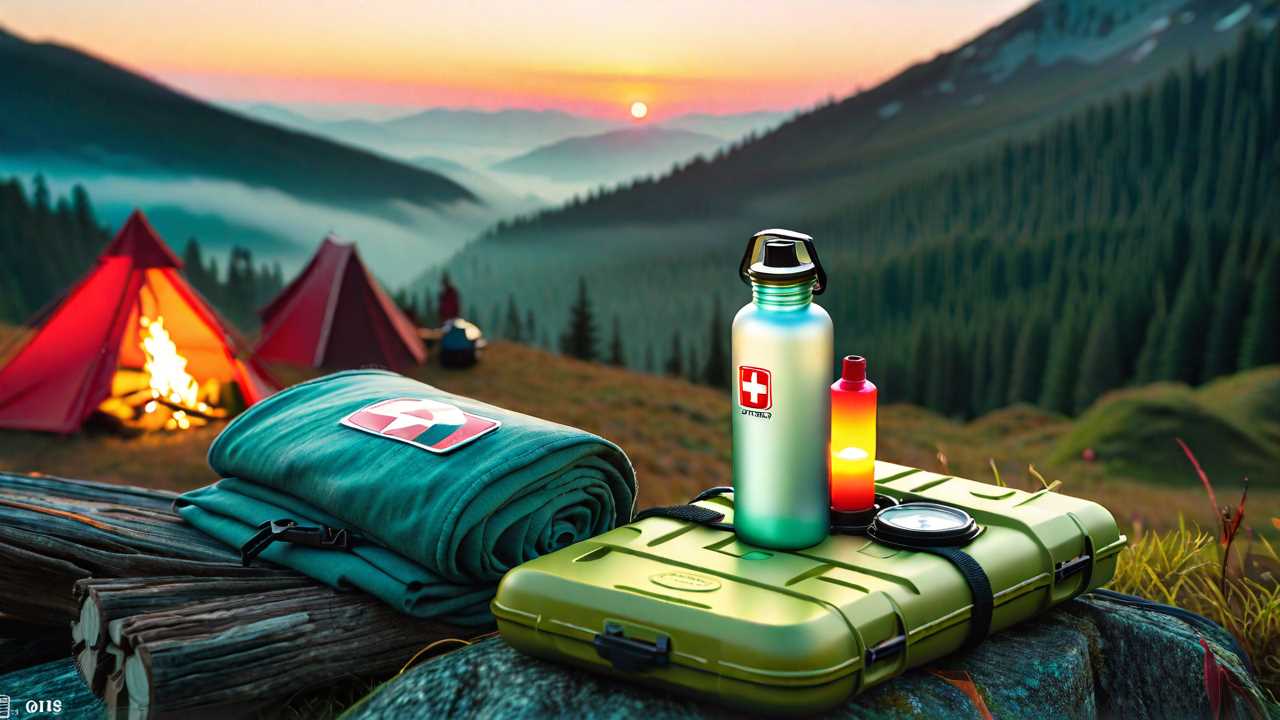
Imagine finding yourself stranded in the wilderness with limited resources. You reach for your survival kit containing essential items to keep you safe and secure. But do you truly have all the essentials needed to survive and thrive in unexpected circumstances? Stay tuned to uncover the key components necessary for a well-rounded survival kit, ensuring you are prepared for whatever challenges come your way.
Food and Water
Pack nutrient-dense foods and ample water to sustain you in a survival situation. When selecting food items, opt for non-perishable, high-energy options like granola bars, nuts, and dried fruits. These choices provide essential nutrients and are easy to carry. Include some canned goods as well, such as beans or tuna, for a more substantial meal. Remember to pack a can opener if needed.
Water is vital for survival, so make sure you have an adequate supply. Aim for at least one gallon per person per day. A reusable water bottle or a hydration pack is handy for storing and carrying water. If your water source is questionable, bring water purification tablets or a portable water filter to make it safe for consumption. Additionally, having a metal container for boiling water is a smart idea.
Stay hydrated and nourished to maintain your energy levels and decision-making abilities during a survival situation.
Shelter and Clothing
Make sure you have adequate shelter and appropriate clothing to protect yourself from the elements in a survival situation. Shelter is essential for maintaining body temperature and protecting yourself from harsh weather conditions. A lightweight and compact emergency shelter, such as a tent or a tarp, can provide you with a safe haven.
Additionally, having a sleeping bag or thermal blanket will help you retain body heat during cold nights.
When it comes to clothing, opt for layers that are moisture-wicking and insulating. A base layer that keeps moisture away from your skin, a middle layer that provides insulation, and an outer layer that shields you from wind and rain are necessary.
Always include extra socks and gloves in your kit to keep your extremities warm and dry.
Having the right tools and navigation equipment is crucial for your survival in any emergency situation. A sturdy multi-tool should be a staple in your kit, allowing you to tackle various tasks such as cutting, opening cans, or fixing gear.
A reliable compass and map will help you orient yourself and find your way if you're lost. Consider adding a signaling mirror and a whistle to attract attention in case of emergencies. Duct tape is incredibly versatile and can be used for repairs, first aid, or even makeshift shelter.
A lightweight and compact shovel can come in handy for digging fire pits, creating shelter, or gathering water. Invest in a quality headlamp or flashlight with extra batteries to navigate in the dark. Lastly, pack a fire starter kit with waterproof matches, a lighter, or fire starter cubes to make sure you can quickly build a fire for warmth, cooking, or signaling for help.
First Aid and Hygiene
When preparing your survival kit, making sure you have adequate supplies for first aid and hygiene is essential for your well-being in emergency situations. A well-stocked first aid kit should include bandages, antiseptic wipes, pain relievers, adhesive tape, and any necessary prescription medications.
In addition to first aid supplies, maintaining good hygiene is vital to prevent infections and stay healthy during survival scenarios. Pack items like soap, hand sanitizer, wet wipes, and menstrual products if applicable. Remember to include personal hygiene items such as toothbrushes, toothpaste, and deodorant to maintain cleanliness and morale.
Be prepared to address minor injuries promptly to prevent complications. Regularly check your first aid kit for expired items and replenish supplies as needed. Practice using the items in your kit to ensure you can effectively administer first aid when required.
Prioritize your health and well-being by including comprehensive first aid and hygiene supplies in your survival kit.
Frequently Asked Questions
Can I Include Electronics Like a Cellphone in My Survival Kit?
Sure, you can include a cellphone in your survival kit for emergencies. A charged phone with important contacts can be a lifeline. But remember, electronics may fail in harsh conditions, so have backup communication options.
Should I Pack Items for Entertainment in a Survival Kit?
You should prioritize practical essentials over entertainment items in a survival kit. Focus on tools for survival like water, food, shelter, first aid, and communication. Keep it light, compact, and efficient for your safety.
Is It Necessary to Include Identification Documents in a Survival Kit?
When out hiking, you never know when you might get separated from your group. Having identification documents in your survival kit can be a lifesaver if you need help or assistance. It's a small item with a big impact.
How Often Should I Replace the Items in My Survival Kit?
You should replace the items in your survival kit at least once a year. Check for expiration dates, damaged items, and changes in your needs or environment. Keeping your kit updated guarantees it's ready when you need it most.
Can I Customize My Survival Kit Based on Specific Health Conditions?
Sure, you can customize your survival kit to cater to specific health conditions. It's essential to include necessary medications, medical supplies, and equipment that address your individual needs. Prioritize your well-being in any emergency situation.
 SportsHollywoodLifestyleFashionHome & GardenTrendsPrivacy PolicyTerms And Conditions
SportsHollywoodLifestyleFashionHome & GardenTrendsPrivacy PolicyTerms And Conditions
